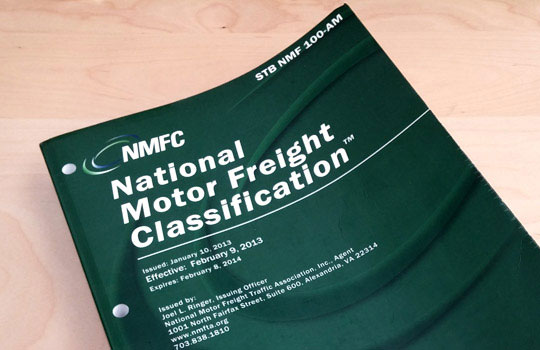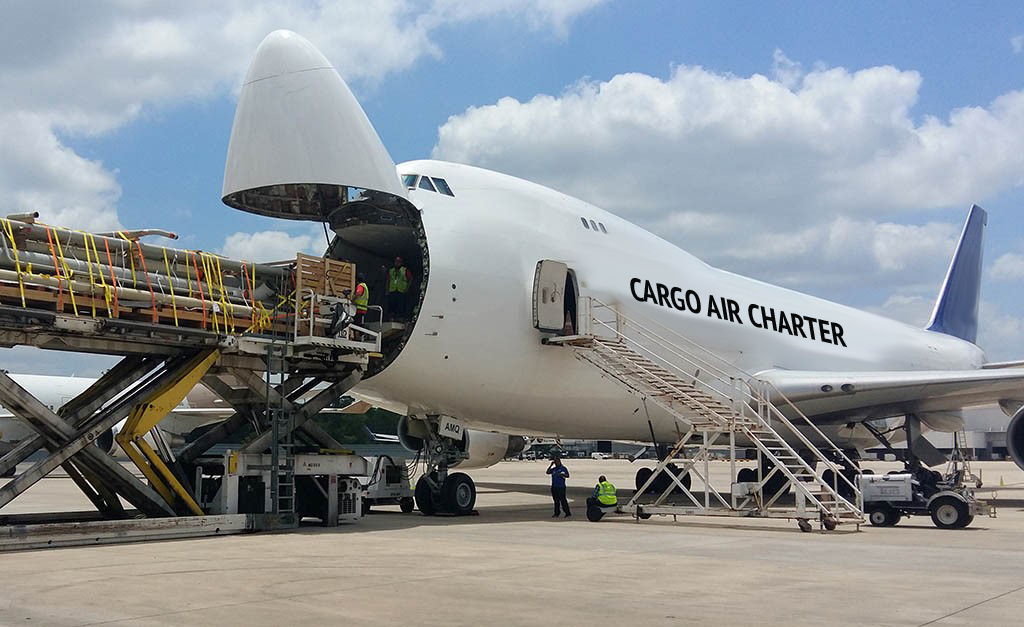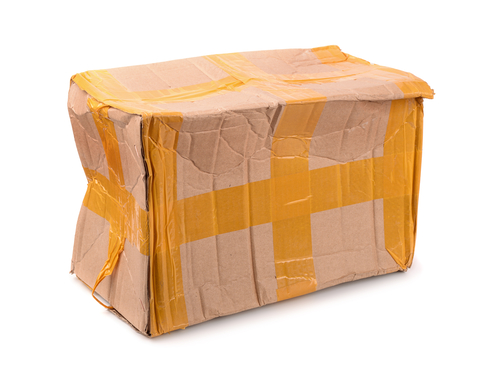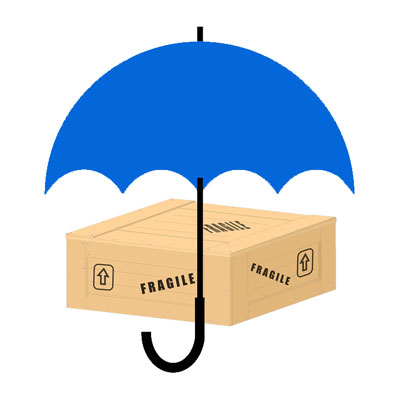
by logisticsplus | Nov 23, 2020 | News
 The Commodity Classifications Standards Board (CCSB) has published a new supplement to the National Motor Freight Classification (NMFC®). These changes became effective 12/19/2020. Some of the notable changes are listed below.
The Commodity Classifications Standards Board (CCSB) has published a new supplement to the National Motor Freight Classification (NMFC®). These changes became effective 12/19/2020. Some of the notable changes are listed below.
- Controllers, Motor Controllers, Switchboards or Switchboard sections – New Item, new classifications
- Battery Chargers, Item 61270 – This item canceled and moved into Item 61700 – Electrical Appliances or instruments
- Cooling or Freezing machines – Items 123310 and 123315 are canceled. New Item established , 123650 – Unit Coolers.
- Tape Sealing or Masking – Item 154360 – Changed from Class 55 to a two tiered density based item with classes of 70 or 92.5.
- Shears, pruning or plant cutting – item 185910 – Changed from class 70 to a three tiered density based item with breaks at 6 and 10 pcf and classes of either 250, 125 or 92.5
- Doors or partitions – Item 34500 and Shades and Shutters – Item 35343, Shutters – Items 37110 and 37120. All items canceled and replaced with Item 35350 – Shades, Shutters or Blinds. A tiered density based item.
- Cabinets, Filing – Items 79220, 80250 and 80270 – Canceled and replaced with Item 80240 which has density breaks at 6 and 12 pcf. New classes are 250, 125 and 70.
- Toasters, Item 63360 – classes adjusted from 100 to 150
- Joints or seals, expansion joints – Item 34830. Item amended to provide classes based on greatest dimension and density
- Equipment, toy train, electric – Item 84150. Item canceled and commodity moved into Item 84260 – Games or Toys , which is a full density item.
- Air Heaters, Windshield heaters or Air conditioners (Automobile Parts group) – Item 18850. Canceled and replaced with Item 17810 which is a three tiered density based classification with breaks at 6 and 10 pcf.
- Gloves or mittens – Items 49900, 49905,49906 and 49920. Canceled and replaced with Item 49910 which is a two tiered density based items with density break at 7 pcf and classes of 175 or 100.
- Item 110 Definitions and Explanations of terms – “Coin or Currency operated” clarified to include two articles that accept or require credit/debit cards or other forms of payment
- Games, NOI coin or currency operated – Item 84180. Item amended to provide classes based on greatest dimension and density.
- Cash Registers or Parts, Item 115840 – Item canceled and commodity moved into Item 116030 – machines, systems or devices .
- Sign posts, brackets or Bases – Items 96740, 106340 and 106840 are canceled and replaced with Item 161130. Item assigns classes based upon greatest dimension and density.
- Lenses optical NOI, Item 57940 – Item amended to ‘Lenses or Lens blanks, optical , NOI. Class changed from 200/85 to 85.
- Compounds, Item 50227 – Item amended to remove bomb burst symbol and clarified that item does NOT apply on materials regulated by the DOT as hazardous and required to bear a Hazard class or Hazard division label.
- Anchors, building, mast pole or smokestack, Item 104030 – Class amended from 50 to 70.
- Cyanides, Item 44210 – Canceled as obsolete.


by logisticsplus | Oct 28, 2020 | News
 While air charters are a common alternative to commercial passenger flights, they’re also an alternative method for transporting cargo. Aside from the cost, one of the most apparent differences between a standard air freight shipment and a cargo air charter shipment is that instead of renting space on a plane you’re renting the entire plane! While it may be more cost-effective for cargo to fly commercially, chartering an entire plane becomes the best solution when time is money.
While air charters are a common alternative to commercial passenger flights, they’re also an alternative method for transporting cargo. Aside from the cost, one of the most apparent differences between a standard air freight shipment and a cargo air charter shipment is that instead of renting space on a plane you’re renting the entire plane! While it may be more cost-effective for cargo to fly commercially, chartering an entire plane becomes the best solution when time is money.
When Time is of the Essence
When it comes to critical supply chains, a missing part or component could equate to losing money every minute until the part is replaced and the supply chain is running smoothly again. When it comes to medical supply chains, a missing drug or instrument could even mean life or death. When a large, heavy-lift, or oversized shipment is urgently needed elsewhere in the world, sometimes there simply is not enough room on a commercial cargo plane to accommodate the move. In situations like these, it’s not uncommon for companies to resort to air charter cargo solutions.
Benefits of an Air Charter
One of the most significant benefits of chartering an entire plane comes from the flexibility surrounding the logistical process. Aircraft used for air charters are readily on a runway, surrounded by a team of cargo professionals who make it possible for charters to take flight in less than two hours, in most cases. If you need a critical flight sooner than what’s readily available on commercial airlines, or if you need to minimize the risk of flight cancellations or delays because the shipment is critical to your supply chain, then air charter might be the optimal solution. While chartering a plane may seem extravagant to some, it comes down to opportunity cost: spending more to solve a problem quickly and efficiently versus waiting for a commercial flight that may risk the loss of critical time, money, or business.
In the right circumstances, air charter service can be a fast, flexible option for your important supply chain need. To quickly get what you want, when you want it, there is no service better than air charter for your cargo. When you pay to use the entire plane, you get to make a lot of decisions like location and scheduling—allowing for timely, flexible deliveries.
You can also find tough-to-find air capacity by going with an air charter. This is especially true right now, as the airfreight industry faces disruptions and supply shortages related to the COVID-19 pandemic. If capacity shortage persists, other transportation modes may also become too backlogged to handle the shipments coming in. That’s when an air charter can help get your cargo to its final destinations on time.
Preparing for an Air Charter
When time is of critical importance, as is the case when booking an air charter, it helps to be well-prepared for an impending deadline. The following list contains the necessary information that will be needed when booking a charter, along with a couple of tips. While all the information listed is not required to obtain a quote, it helps generate a more accurate estimate of the cost.
- Shipper contact information
- Shipper company name
- If the shipping company is not the paying company, the consignee name and contact should also be provided
- Billing authorization number (if applicable)
- The shipping company, address, city, state, and zip code (if applicable)
- On-site contact at shipper
- Dock or special instructions
- Consignee, address, city, state, and zip code (if applicable)
- On-site contact at the consignee
- Dock or special instructions
- Ready time, including time zone
- Need time, including time zone
- Pieces
- Weight
- Dimensions
- Hazmat (Yes / No)
- If Yes, obtain UN# and Class
- Services required
- Door to Door
- Door to Airport
- Airport to Door
- Airport to Airport
Air Charter Industry Facts
It is estimated that the value of the air charter services market was $26.57 billion in 2019 and it is projected to reach $33.08 billion by 2024. Increasing demand for cargo air charters and the shift toward aircraft renting are the major factors driving the market. However, the volatility in aviation fuel prices is a concern. According to Wikipedia, there are approximately 15,000 business jets available for charter in the world. The U.S. market is the largest, followed by the European market with growing activity in the Middle East, Asia, and Central America.
How to Book an Air Charter
If this is your first time booking a charter, no worries – Logistics Plus is here to help! The dedicated, LP Air Charter Group – led by seasoned industry veterans – has relationships with all the top airfreight cargo carriers. Our cargo air charter services are perfectly suited for any critical shipment need, including aerospace, automotive, generators, heavy-lift, helicopters, healthcare, medical, oversized, oil & gas, pharmaceuticals, PPE supplies, project cargo, transformers, and more!
The LP Air Charter Group will determine all facets of arranging the air charter, including:
- Which airport to use, in part based upon the length of the runway and determination of which aircraft can or cannot land at each airport
- What type of aircraft is needed
- How the plane will be loaded, including whether a specific airport has high-low drivers to load/unload the aircraft
- What the hours of operation are for the fixed-base operator (FBO)
Ready to learn more? Contact the LP Air Charter Group today!


Don’t need an air charter but still interested in international air freight services? You can contact us about standard air freight too.

by logisticsplus | Oct 13, 2020 | News


Supply chain management is an activity taken on by companies, or their logistics and supply chain partners (like Logistics Plus), to develop and operate supply chains in the most effective and efficient ways possible. The concept of supply chain management focuses on one core idea: practically every product in the world reaches an end-user. The more steps there are in a logistics plan, the more efficient your supply chain process needs to be. Here are five tips to effectively manage your supply chain.
1. Develop a Supply Chain Strategy
Although it seems like common sense, few businesses actually develop a written supply chain strategy. Effective supply chain and logistics management are all in the planning. The fewer decisions that need to be made on the fly during the transportation process the better. Although a solid plan won’t cover every circumstance, it will limit the number of decisions that need to be made. A good logistics provider will plan well ahead to eliminate supply chain disruptions as best they can.
2. Always Have a Contingency Plan
No matter how good your logistics plan is, disruptions and delays are inevitable. After the plan is made, the job is far from over. Your logistics department, or provider, should have contingencies for every element of your plan if something goes wrong. You should also know when to stick with your original plan rather than switching to your backup.
3. Leverage New Technology
Technology that exists today plays a major role in strengthening supply chains. The most successful supply chains incorporate technology such as warehouse management systems (WMS) and transportation management systems (TMS) to automate processes. By speeding up decision making, technology-driven supply chains play a large role in helping companies gain a competitive advantage.
4. Align Your Supply Chain With Your Business
Sales and operations collaboration makes it easier for companies to align supply chains with their business. One great way to do this is by focusing on employee development. Investing in the necessary training and skills for employees allows them to understand the impact processes have on the business.
5. Learn From Your Mistakes
Depending on the size and complexity of your company, poor supply chain management can cost your company hundreds of thousands of dollars each year. The most important thing you can do when optimizing your supply chain is to identify your mistakes. As a result, you can shift your focus on putting systems in place to ensure the same mistakes don’t happen again.
Logistics Plus provides dedicated supply chain solutions to a growing list of diverse and reputable customers. Request a risk-free supply chain analysis today or contact us using the button below.


by logisticsplus | Aug 18, 2020 | News
 In case you missed it, the Commodity Classifications Standards Board (CCSB) has published a new supplement to the National Motor Freight Classification (NMFC®). These changes became effective 8/15/2020. Some of the notable changes are listed below (thank you for the reminder from our friends at Southeastern Freight).
In case you missed it, the Commodity Classifications Standards Board (CCSB) has published a new supplement to the National Motor Freight Classification (NMFC®). These changes became effective 8/15/2020. Some of the notable changes are listed below (thank you for the reminder from our friends at Southeastern Freight).
Boats or Boat Sections – Athletic Goods Group
- New items have been established for Boats, inflatable-24650 and Boats or Boat Sections-24670.
- Items 24540, 24660, 24665, 24666, 25000 and 25230 have been canceled.
Doors, including Mirrored Doors – Building Materials, Miscellaneous, Group
- The density scale for Item 34265 is going from 8 subs to 10 subs with classes increasing. Item 34265 has been amended to remove the restriction “other than rolling.”
- Items 34400 and 34500 changed “rolling” to “roll up”.
- Item 34330 has been canceled and moved to Item 34265.
- Item 34267 is amended to included mirrored doors.
Boxes, fiberboard, paper, paperboard or Pulpboard, combined or not combined with other materials
- New Item 29785 is established to incorporate many varieties of fiberboard or paperboard boxes. These will now be full-scale density items.
- Concurrently, Items 28920, 29205, 29240, 29250, 29285 and 29400 are canceled and have been moved to item 29785.
Foodstuffs, other than Frozen
- New items are established 72510 (Cocktail Mix), 72560 (Coconut), 73450 (Honey), 74095 (Molasses and other Syrups), 74310 (Popcorn, not popped), 74495 (Prepared Foods, such as pasta, noodles, rice, etc.) and 75400 (Vinegar).
- Items 72190, 72780, 73200, 74250, 74820, 73480, 74300, 75150 and 75180 are canceled and have been moved to these new Items.
- Additionally, 11 commodities have been removed from the viz listing in Item 73227 and moved to these new Items.
Broilers, Grills, Roasters or Stoves, cooking, outdoor type
- Item 25865 is amended to provide classes predicated on density with breaks at 6 and 10 PCF.
- Item 25860 is canceled with no further application.
- Items 25861, 25863, 25864, 25865 and 25866 have been clarified and simplified.
Bleachers or Grandstands
- The Grandstands Group IT-89800 is canceled.
- New Items 89790 and 89795 have been established to apply for all types of Bleachers and Grandstands with classes based on greatest dimension and density.
- Concurrently, Items 89803, 89805, 89810, 89813, 89816 and 89818 are canceled.
Curtain Poles or Rods
- Item 55190 is amended to a single class of 110.
Self-reactive materials – Hazard Class 4, Division 4.1 – Chemicals Group
- Item 46047 is established for self-reactive materials with classes predicated on whether or not the material is subject to temperature control requirements and by the self-reactive material type for the non-temperature-controlled materials.
Gates
- Item 86310 is amended to provide classes predicated on density, with breaks at 8 and 12 pcf. It is also amended by adding hallway and stairway gates for clarification.
Cans or Tubes, packaging, fiberboard, paper, paperboard or pulpboard
- New item 29860 is established for Cans or Tubes, mailing or packaging with classes predicated on density with breaks at 4, 6 and 12 pcf.
- Items 29030, 29760, 29820 and 29840 are canceled and moved to Item 29860.
Peanuts, other than raw
- Item 141800 for Peanuts, in shell, is amended to class 85.
- Item 141820 for Peanuts, shelled, is amended to class 70.
Pools, swimming or wading, other than in-ground pools
- Item 17050 is amended for clarification and to provide classes predicated on density breaks at 10 and 15 pcf.
Irons, Electric
- Item 62285 is amended for clarification and simplification, and class 125 is assigned.
Booths, paint and varnish spraying, or panels thereof
- New item 27900 is established for Booths, painting or varnish spraying, with classes based on greatest dimension and density.
- Items 27950, 27960 and 27970 are canceled and have been moved to new Item 27900.
Carriers or Racks, bicycle, motorcycle, motor scooter, mobility scooter or wheelchair, vehicle mounting, metal
- New Item 164075 is established with classes based on density breaks at 8 and 12 pcf.
- Item 164070 is canceled with reference to new Item 164075.
Burners or Burner heads, gas appliance
- Item 25885 is amended to provide classes predicated on density, with a single break at 9 pcf.
Workbenches
- New item 82250 is established for Workbenches with classes predicated on density breaks at 6 and 10 pcf.
- Items 79920 and 79930 are canceled.
Corrosive Materials – Hazard Class 8
- Item 44155 is amended to assign classes predicated on the DOT-assigned Packing Group.
Cesspools and Floor Drains
- New item 51130 is established for Floor Drains with classes based on a density break at 12 pcf.
- Item 50810 is canceled.
Blackboards or Chalkboards, NOI; Corkboards or Tackboards or Whiteboards, Dry Erase Boards or Markerboards
- Item 23701 is amended to specify additional packaging requirements only.
Pesticides, NOI
- Item 155050 is amended to remove the “bomb burst” symbol, add language further restricting the item’s application to materials not required by the DOT to bear a Hazard Class or Hazard Division label.
Obsolete Items
- Filler, arm rest , Item 18700 is canceled.
- Forms, arm rest, Item 18720 is canceled.


by logisticsplus | Jul 21, 2020 | News
 As a freight broker/intermediary, Logistics Plus has no legal liability for loss and damage claims that occur as a result of carrier services we source for our customers; although we do offer to assist our customers with the processing of freight claims. No one likes to deal with missing or damaged goods or filing freight claims, but sometimes it happens. Here are six common types of freight claims.
As a freight broker/intermediary, Logistics Plus has no legal liability for loss and damage claims that occur as a result of carrier services we source for our customers; although we do offer to assist our customers with the processing of freight claims. No one likes to deal with missing or damaged goods or filing freight claims, but sometimes it happens. Here are six common types of freight claims.
- Damaged Claim – If physical damage to your shipment packaging is visible as noted by your consignee on the delivery receipt (or proof of delivery, POD), you can file a damage claim. Typically, you have nine months to submit a claim for visibly damaged goods. With proper evidence, the carrier will most likely refund a portion of your shipping costs. However, you’ll have to pay your freight invoice upfront and get reimbursed for any losses when the claim is processed.
- Concealed Damage Claim – When damage is concealed, that generally means it isn’t visible until after delivery, which means it was probably not notated on the POD. Concealed damaged claims are harder to prove. Most carriers only allow a five-day window to file a concealed damage claim (some even less based on each carriers’ rules tariff). If more than the allotted timeframe passes before you file, the carrier that handled your shipment will likely deny your claim. Including photos and any other evidence, you have with your claim will increase your odds of getting a partial refund.
- Shortage Claim – If your shipment shows up with a shortage and the consignee notates it on the POD, you can file a shortage claim. This can happen if the packaging is not intact and freight is missing. It can also happen if the amount of freight delivered doesn’t match what’s printed on the original bill of lading (BOL). Again, you typically nine months to file a claim. Expect to pay your freight upfront and then get reimbursed once the claim has been processed.
- Concealed Shortage Claim – Like a concealed damage claim, concealed shortage claims occur when a missing product is not noted on your POD, meaning it isn’t visibly evident that you’re short until after delivery. With concealed shortages, the packaging is usually intact, and it’s not obvious that freight delivered doesn’t match freight specified on the original BOL. Concealed shortage claims are difficult to prove, so you’ll often find that carriers push back. As with other concealed claims, time is of the essence. You only have five business days (or less) to file a claim.
- Refused Claim – Sometimes, a shipment delivers and it’s the wrong freight, the product is damaged, or the shipment is late. Consignees have the right to refuse part or all of shipment if they are unhappy with the condition of their freight. If your consignee refuses the shipment, it’s returned to the carrier’s delivery terminal. The carrier will contact you and ask what you want them to do with your shipment. Your options are to have it shipped back to you, have it sent to another address, or have it disposed of. In most cases, you will not have to pay your invoice.
- Loss Claim – A loss claim is a worst-case scenario because it means your entire shipment was lost by the carrier. This most commonly happens when shipment paperwork is separated from the freight. When this occurs, the carrier typically has a week to attempt to locate your freight. If they can’t find it, you shouldn’t be charged for shipping.
The carrier must acknowledge receipt within 30 days (49 CFR 370.5). Carriers must pay, decline, or make a firm compromise settlement offer within 120 days after receipt of the claim (49 CFR 370.9). The time period for commencing civil action cannot be less than two years from the date the carrier gives written notice to the claimant disallowing the claim (49 USC 14706e). Since there are legal time limits for filing and processing claims, you must obtain registered mail or other receipts indicating when you filed your claim.
Now that you understand the most common freight claim types, here are six common reasons why freight claims may be denied.
- Incomplete/Inadequate Documentation – When filing a freight claim, shippers should be sure to follow NMFC minimum documentation requirements. Probably the most common reason for a claim being denied is because of incomplete information and/or documentation. Logistics Plus offers help as to what documentation should be filed and can assist customers with the filing process.
- Mitigation – Per NMFC guidelines, it is the responsibility of a shipper to mitigate the costs of a claim to the least amount possible, which essentially means shippers are required to do their part to help minimize financial loss. Mitigation is usually done by selling the damaged item at a discount, selling it for parts or scrap, or by repairing the item rather than replacing it completely. If making repairs, the cost of repairing the item would be the amount filed for in the claim.
- Freight Charges Not Paid – Even if the freight charges are going to be refunded or credited in their entirety¸ per industry guidelines set by the NMFC, the freight charges for a shipment must be paid before a claim can be settled.
- Pallet/Piece Count – A bill of lading will typically denote having received “x” number of skids/pieces intact (shrink-wrapped/non-shrink wrapped) when a shipper performs their own load and count. When a carrier doesn’t perform the load and count, it’s considered that the number of skids/pieces tendered to the carrier is the quantity shipped, since they aren’t able to perform a piece count of the broken-down shipment before it was packaged to verify quantity. For example, a carrier is tendered 2 shrink-wrapped skids comprised of 25 individual boxes on each skid for a total of 50 boxes for the entire shipment, which the shipper shrink-wrapped and loaded onto the truck themselves. The carrier will likely mark the BOL as having received 2 shrink wrapped skids said to contain 50 boxes. When both skids arrive at the consignee and a shortage of 1 box is discovered, it’s difficult to prove that the shipment only contained 50 boxes to begin with. The shipper could have packaged the shipment with only 49 boxes by accident. The only thing the carrier knows for certain is that 2 skids were tendered, and 2 skids were delivered, as there was no opportunity for the driver to verify or count all 50 boxes, especially when skids are already shrink-wrapped when a carrier arrives for pickup.
- Clear Delivery – Establishing carrier liability without notation of damage on the delivery receipt can be difficult. In spite of what some shippers may think, writing “Subject to Inspection” on the POD does not serve as sufficient evidence that any specific damage has occurred, because it can create a scenario in which the consignee is the only witness to the discovery of the damage, which leaves reasonable doubt as to who was in possession of the shipment when the damage occurred.
- Act of God – Carriers are exempt from liability for things like hurricanes, floods, and fires, which are considered an act of God and beyond a carrier’s control.
 You should be aware that all freight shipments come with some sort of “limited liability coverage.” This coverage is determined by the carrier and varies depending on the commodity type or freight class of the goods being shipped (more LTL carriers are going to limited liability by freight class). For the most part, carrier liability covers up to a certain dollar amount per pound of freight. It is not uncommon to find that the included liability coverage is less than the actual value of the goods being shipped. New goods liability limits generally run between $2 and $10 per pound; while used goods will typically be capped at $0.10 to $0.50 per pound. Also, special commodities also have released-value liability limits. So, if you are shipping a high-value shipment (new or used), you should consider some sort of additional shippers’ interest cargo insurance coverage.
You should be aware that all freight shipments come with some sort of “limited liability coverage.” This coverage is determined by the carrier and varies depending on the commodity type or freight class of the goods being shipped (more LTL carriers are going to limited liability by freight class). For the most part, carrier liability covers up to a certain dollar amount per pound of freight. It is not uncommon to find that the included liability coverage is less than the actual value of the goods being shipped. New goods liability limits generally run between $2 and $10 per pound; while used goods will typically be capped at $0.10 to $0.50 per pound. Also, special commodities also have released-value liability limits. So, if you are shipping a high-value shipment (new or used), you should consider some sort of additional shippers’ interest cargo insurance coverage.
Need freight claims help or are you looking for a freight claims management solution? Contact Logistics Plus – we’re here to help!

Page 5 of 12« First«...34567...10...»Last »

 The Commodity Classifications Standards Board (CCSB) has published a new supplement to the National Motor Freight Classification (NMFC®). These changes became effective 12/19/2020. Some of the notable changes are listed below.
The Commodity Classifications Standards Board (CCSB) has published a new supplement to the National Motor Freight Classification (NMFC®). These changes became effective 12/19/2020. Some of the notable changes are listed below.






 You should be aware that all freight shipments come with some sort of “
You should be aware that all freight shipments come with some sort of “